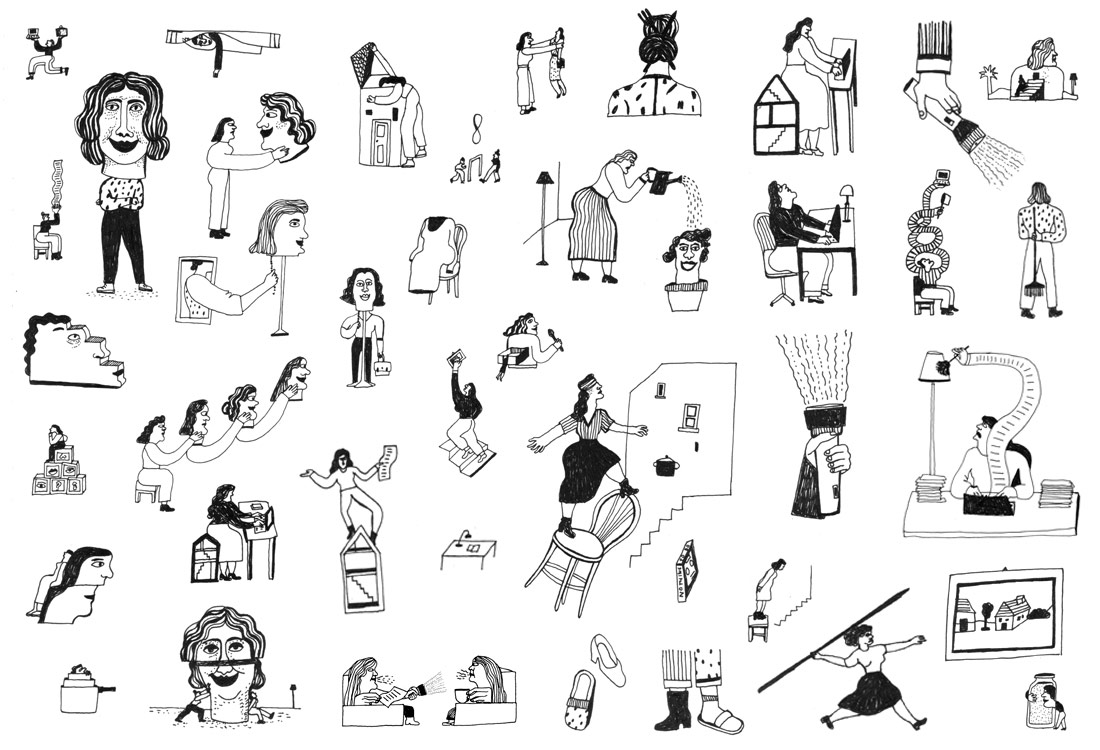
CC BY-NC Bea Lozano, 2018
The work of Sara Ahmed helps to draw links between feminist theory and living a feminist life. Ahmed questions the focus placed on the fight for happiness built around certain social ideals. This focus has helped to establish two figures: on one hand, the unhappy housewife, who in turn creates a new fantasy about emancipation from the home, without considering who has the right to this; and on the other, the figure of the killjoy feminist, which has led some authors to build a reactionary discourse around feminism, as something that doesn’t allow women to find happiness. What is it that makes us think of feminist awareness as a type of unhappiness? Courtesy of Caja Negra Editora, we publish an extract of the author’s new book, The Promise of Happiness, in which she investigates this perspective.
In 1960, the problem that has no name burst like a boil through the image of the happy American housewife. In the television commercials the pretty housewives still beamed over their foaming dishpans […]. But the actual unhappiness of the American housewife was suddenly being reported […], although almost everybody who talked about it found some superficial reason to dismiss it.
Betty Friedan, The Feminine Mystique
Betty Friedan in The Feminine Mystique identifies a problem that has no name by evoking what lies behind the image of the happy American housewife [1]. What lies behind this image bursts through, like a boil, exposing an infection underneath her beaming smile. Friedan proceeds by exposing the limits of this public fantasy of happiness. The happy housewife is a fantasy figure that erases the signs of labor under the sign of happiness. The claim that women are happy and that this happiness is behind the work they do functions to justify gendered forms of labor, not as a product of nature, law, or duty, but as an expression of a collective wish and desire. How better to justify an unequal distribution of labor than to say that such labor makes people happy? How better to secure consent to unpaid or poorly paid labor than to describe such consent as the origin of good feeling?
And yet, who or what do we see in this image of the happy housewife? She is, as Friedan points out, a fantasy. Even as fantasy, however, she evokes the embodied situation of some women more than others. After all, many women at this time were not housewives: for some women to work at home would be an aspiration rather than situation. bell hooks in Feminist Theory points to this exclusivity of the happy housewife, even when understood as fantasy: “When Friedan wrote The Feminine Mystique, more than one-third of all women were in the workforce. Although many women longed to be housewives, only women with leisure time and money could actually shape their identities on the model of the feminine mystique” [2]. Friedan’s solution to the unhappiness of housewives — that they should be liberated from the house — has consequences for those women who could not shape their identities around the feminine mystique. As hooks points out, “She did not discuss who would be called in to take care of the children and maintain the home if more women like herself were freed from their house labor and given equal access with white men to the professions”. While the fantasy of the happy housewife conceals the signs of domestic labor under the sign of happiness, the fantasy of the housewife becoming happy through being liberated from the home might also conceal the labor of other women, who might be required to take over “the foaming dishpans.”
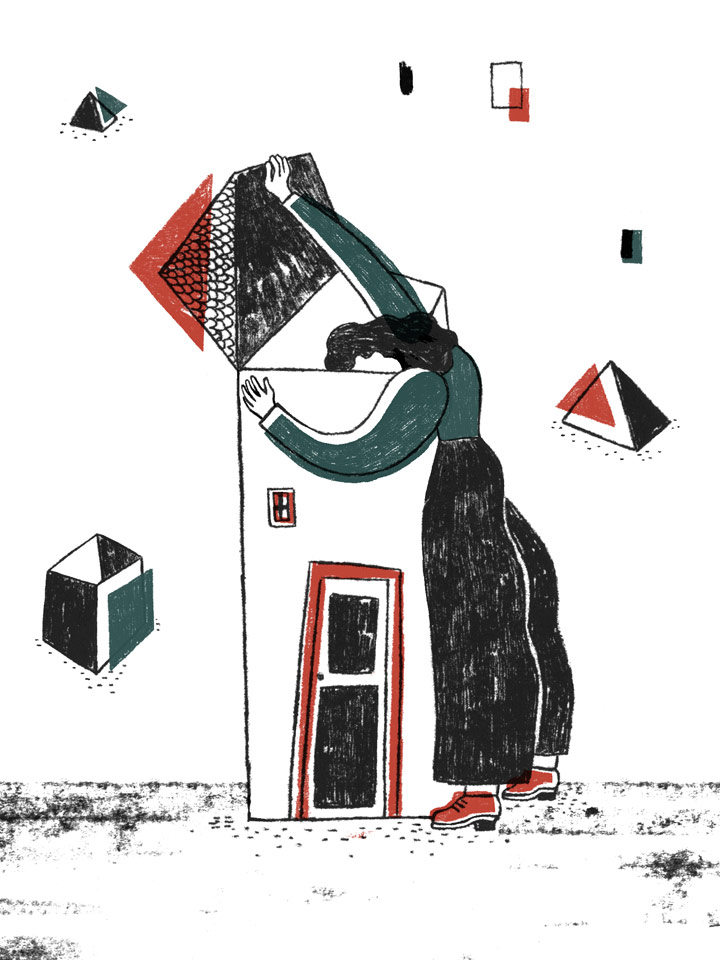
CC BY-NC Bea Lozano, 2018
When we track this figure of the happy housewife, we need to think of what the figure does, and how that figure works to secure not just ideas of happiness but ideas of who is entitled to happiness. White liberal feminists such as Betty Friedan taught us that proximity to the fantasy of the good life does not mean proximity to happiness. Sheila Rowbotham describes how “in the writing of the early years there is a struggle to assert a separate identity and challenge the house as a fantasy of happiness” [3]. Black feminists such as bell hooks teach us that some women — black and working-class women — are not even entitled to be proximate to the fantasy, though they may be instrumental in enabling others to approximate its form. We can consider not so much how happiness as such is distributed (this would forget what was important about the second-wave critique of the unhappiness concealed by the figure of the happy housewife) but the distribution of relative proximity to ideas of happiness. Or we might speculate that what is unequally distributed is the feeling that you have what should make you happy, a distribution of the promise of a feeling, or the feeling of a promise, rather than the distribution of happiness, as such.
Have images of happy housewives been replaced by rather more desperate ones? While there is a diversification of affects tied to the figure of the happy housewife, which gives her a more complex affective life, it does not necessarily dislodge the happiness that is presumed to reside in “what” she does, even in descriptions of relative unhappiness. Unhappiness can function as a sign of frustration, of being “held back” or “held up” from doing what makes her happy. Explanations of relative unhappiness can function to restore the power of an image of the good life in the form of nostalgia or regret for what has been lost.
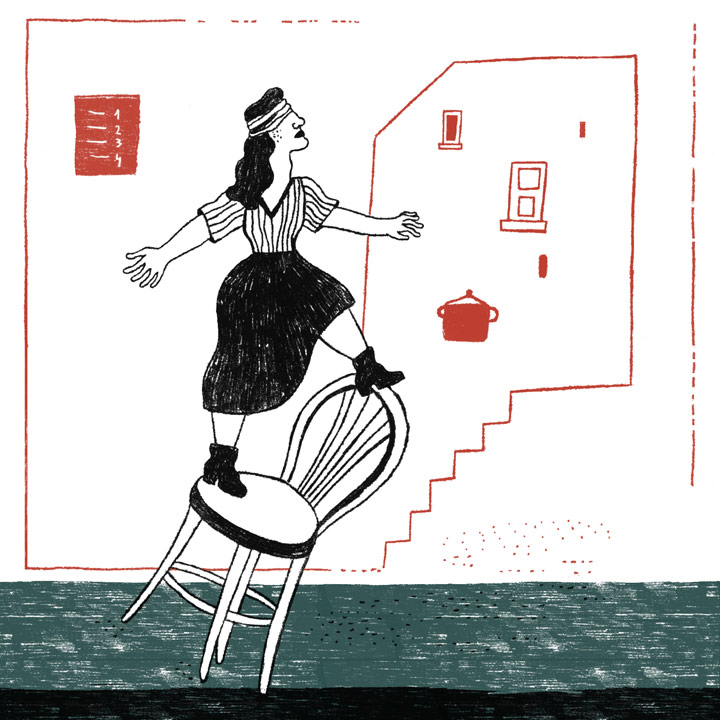
CC BY-NC Bea Lozano, 2018
The happy housewife retains its force as a place holder for women’s desires and could even be said to be making a return. Take the following passage from Darla Shine’s Happy Housewives: “Being home in a warm, comfy house floating around in your pajamas and furry slippers whiles sipping coffee as your babies play on the floor and your hubby works hard to pay for it all is not desperation. Grow up! Shut up! Count your blessings!” [4]. Shine conjures for the reader a very specific image of what makes housewives happy. In conjuring this image — of leisure, comfort, and ease — she calls for us to return to a certain kind of life, as if this was the kind of life that women gave up in embracing feminism: her fantasy of the happy housewife is as much a white bourgeois fantasy of the past, a nostalgia for a past that was never possible as a present for most women, let alone being available in the present. Shine argues that women have become invested in “being desperate” and have been betrayed by the feminist movement that has “dropped the ball for women at home”. Alluding to the program Desperate Housewives as an example of what women do not want, Shine encourages us to adopt a new image: “I want mothers everywhere to dismiss this horrible image of desperation and come together to promote the image of the happy housewife”. This new image comes with a commitment to specific values: “respect; pride; confidence; passion; friendship; a clean beautiful home; and, most importantly, a close relationship with your children”. While mothering is a crucial element here in this manual for happiness, so too is marriage, as an institution described in terms of heterosexual intimacy: Shine suggests that “you will never be a happy housewife if you’re not intimate with your husband”.
Shine’s book is unexceptional. On the Internet, we witness a new generation of bloggers who take on this identity of “the happy housewife.” These bloggers use the opportunity of the public space generated by new technologies to make public their claim of happiness. This claim is also an insistence on the error of feminism and on the importance of instructing women on how to be happy; happiness is being good at being a housewife, as well as what follows being good. Such blogs typically include recipes, tips on doing housework, thoughts on mothering, as well as belief statements that register the happy housewife as an important social role and duty that must be defended, as if the speech act (“I am a happy housewife”) is itself a rebellion against a social orthodoxy. The image of the happy housewife is repeated and accumulates affective power in the very narration of her as a minority subject who has to reclaim something that has been taken from her. This affective power not only presses against feminist claims that behind the image of the happy housewife was an unspoken collective unhappiness but also involves a counterclaim that happiness is not so much what the housewife has but what she does: her duty is to generate happiness by the very act of embracing this image.
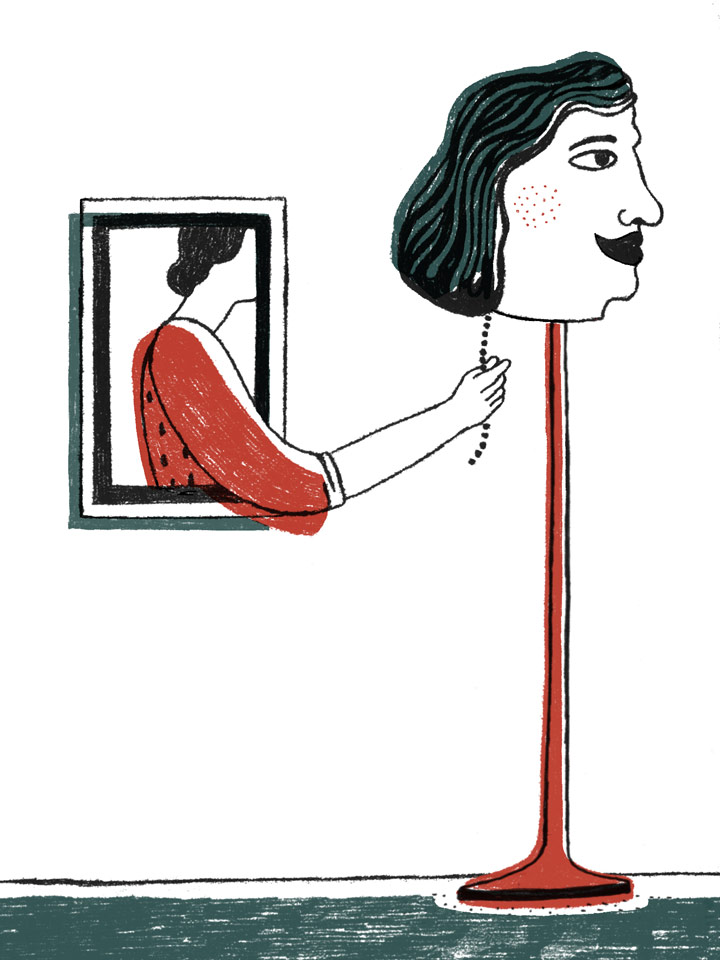
CC BY-NC Bea Lozano, 2018
In this political context, it is not surprising that research in happiness studies has “shown” that traditional housewives are happier than their working counterparts, as the American journalist Meghan O’Rourke explores in her aptly named article “Desperate Feminist Wives”. By implication, it is feminism that gives women the desires that have made them unhappy. This chapter will offer a different way of understanding the relationship between feminism and unhappiness. I begin by reflecting on how happiness was used historically as an argument for sustaining a gendered division of labor, taking as a starting point the work of the philosopher Jean-Jacques Rousseau on education. My argument challenges Lesley Johnson and Justine Lloyd’s claim that the happy housewife was a feminist myth—what they call “a myth of a myth”—through which the feminist subject could generate the housewife as “the other” [5]. I suggest that the happy housewife has a very long genealogy, and that she emerges as a figure at least in part as a response to feminist claims.
By providing a genealogy of the happy housewife, we can reflect on the political landscape in which the figures of the unhappy housewife and the feminist killjoy emerge. My suggestion is that we can reread the negativity of such figures in terms of the challenge they offer to the assumption that happiness follows relative proximity to a social ideal. I focus not only on the affective power of these figures but also on feminist consciousness as a form of unhappiness, suggesting that earlier feminist languages of “consciousness-raising” and even “false consciousness” may be useful in an exploration of the limitations of happiness as a horizon of experience.
Sara Ahmed, The Promise of Happiness (Duke University Press Books, 2010).
[1] Friedan, B. (1965). The Feminine Mystique. New York: Penguin Books.
[2] hooks, b. (2000). Feminist Theory: From Margin to Center. Cambridge: South End Press.
[3] Rowbotham, S. (1989). The Past Is Before Us. Feminism in Action since the 1960s. London: Penguin.
[4] Shine, D. (2005). Happy Housewives. New York: HarperCollins.
[5] Johnson, L., Lloyd, J. (2004). Sentenced to Everyday Life. Feminism and the Housewife. Oxford: Berg.

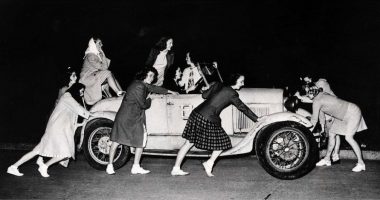
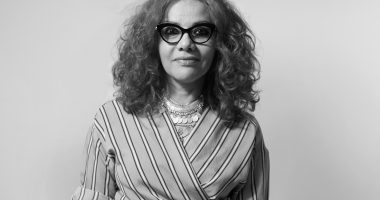
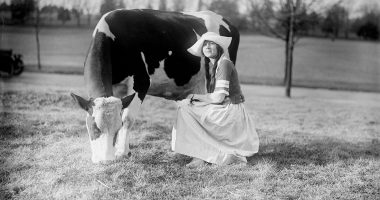
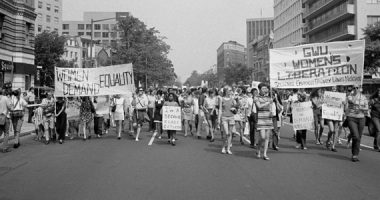
Luis Manteiga Pousa | 26 March 2021
Antes las mujeres estaban “condenadas” a ser amas de casa pero los hombres estaban “condenados” a trabajar fuera de ella.
Leave a comment